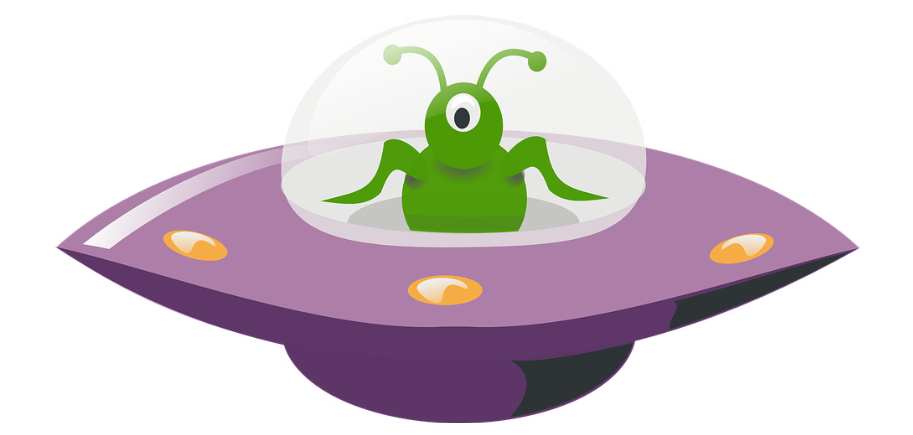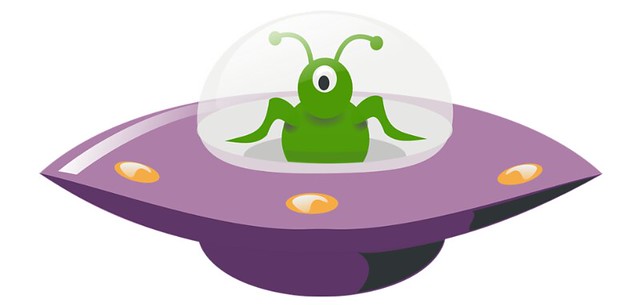While most people in modern times may realize that aliens are not green humanoid creatures they may not agree on how aliens actually look. Luckily, astrobiologists have been thinking, and researching on the subject have begun to share their thoughts with the rest of the world and it turns out, aliens might look much different than we could have ever predicted.
Since the sixteen hundreds, human beings have been casting life on other planets as human-like in the media from The Comical History of the States and Empires of the Worlds of the Moon and Sun (1657) by the French writer Cyrano de Bergera to Isaac Asimov’s Foundation novels in the late twentieth century through modern movies and novels such as the Star Trek and Star Wars franchises. Thus, the long-held view of aliens is that they are human like. However, many people have begun to question this idea that has been floating around in the media for a long time.
“As for aliens, I think every portrayal of aliens in Hollywood or T.V. shows or whatever, they all have like generally humanoid faces, which is not accurate, like if something breathes carbon dioxide instead of oxygen then it’s not going to look the same because it’s going to be made of different stuff. I saw this one thing about Star Wars: a New Hope, how in the Cantina scene, where there’s all the different aliens in it but they all have like they all have two eyes and a mouth in different positions. But if something is alien and so different from humans then it’s not going to have those same features,” first-year Kallie Delis said.
First-year Mairead Howely agreed. “I don’t know anything about this because I don’t know how biology works, or chemistry, or anything like that but I still think that it’s absurd that aliens necessarily even have the same definition of life that we do. I don’t think that aliens even look like anything we could recognize as human.
“Like in Madeleine L’Engle A Wrinkle In Time they talk about how there’s this other planet that has like alien like sentient beings on it and Meg, the protagonist, tries to explain what sight is to them but they have this other sense that’s like emotions sort of but it’s very different from human senses but it’s sort of more profound. They can like sort of sense what something is instead of what it looks like.”
“So why would we assume that aliens have like sight and sound and everything like humans?” Howley questioned.
Star Trek blames their lack of diversity on the Theory of Panspermia, which was proposed by two scientists – Steven Benner of the Westheimer Institute of Science and Technology in Gainesville Florida and Christopher Adcock of the University of Nevada, Las Vegas – to explain the fact that Earth lacks some of the chemicals essential to forming life while Mars has them.
While most agree that water is one of the building blocks of life, RNA – the beginnings of genetic expression – falls apart when built in water. Thus some theorists believe that life on earth may have developed on Mars and ended up here via rocks or asteroids coming from Mars.
Star Trek builds on this theory by creating worlds in the Milky Way who are all ancient relatives of each other.
However, proponents of this theory argue that life on earth came from various places in the universe through asteroids and comets hitting earth and therefore, because different elements exist in different places, life in other places in the solar system would be completely different and not necessarily human-like.
“Just because of how different the conditions on other planets would be I think that aliens could be incredibly similar to life on earth if we find an earth like planet. Or, so different that we might not even be able to recognize it. We’re already found like arsenic based life forms on earth and a few years ago we didn’t even know those existed so who’s to say that there aren’t more elements that haven’t been discovered?’ second-year Harrison Andrew said.
First-year Caito Moore agreed with this, adding, “I think that unless we’re operating under the assumption that all the elements and all the stuff that’s needed to survive is the exact same for the entire universe which I doubt the odds that there are aliens that are even remotely similar to us is kind of unlikely. To use kind of a cheesy fictional example I suppose, there could be beings made of pure energy or metallic stuff like that. I don’t think that humanoid creatures should be the assumption that we’re jumping to.”
Daniel Apai, an astronomy and astrobiology researcher at the University of Arizona and the NASA Astrobiology Institute told the National Geographic, “While there are examples for parallel evolution in the terrestrial biosphere – for example, similar eyes evolving in very different, unrelated species – it seems unlikely to me that we would encounter alien life that would be humanoid.”
But, Apai concludes that we will be surprised with what life on other planets will actually look like if humans have the chance to interact with them, which is something that creative New College students might agree with, in trying to envision human life.
“I think they look like sea creatures, and the rocky horror cast,” first-year Lindsay McElroy said.
“I believe that aliens and they’re living amongst us and we just don’t know who they are. They probably don’t have belly buttons that’s a strong indicator, and maybe they all wear hats because they actually all have cone heads or maybe they can transform into something that looks like the [alien] snapchat filter,” first-year Kaeli Williams added.
While scientists remain mostly unsure of what aliens actually look like, it can be fun to theorize about and imagine, just remember, that these aliens are probably not as human like as the ones in the movies, according to the latest thinking of scientists including Apai.
Information for this article was taken from nationalgeographic.com.
“I think aliens would look like friendly beings, or very unfriendly beings either one.” first-year Tali Zacks said.


